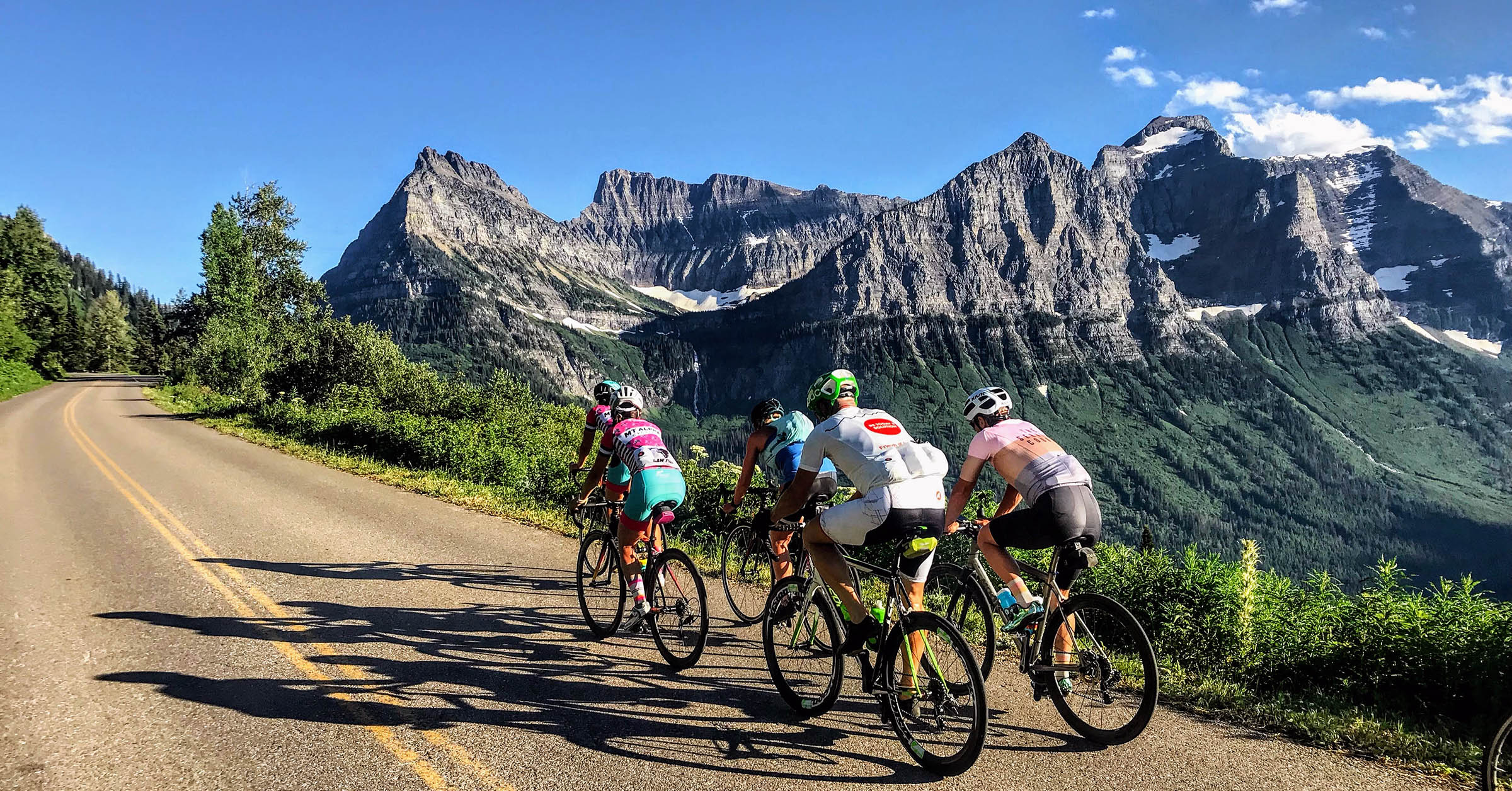Whether you’re cycling for fitness or as a profession, riding in a group is an inevitable part of the sport—and also one of the best things about being a cyclist. Having friends to ride with not only makes coffee rides more enjoyable, it’s also a sure-fire way to push you out of your comfort zone. If you’ve never ridden in a group before, take our advice before your first ride. And if you’re a seasoned vet, just treat this list as your etiquette checklist for following the unspoken rules of the road.
Rule #1: Follow bike traffic laws
First things first: Safety is top priority. Obey the laws for your own safety as well as your friends’, and do what you can to not anger drivers. Sure, you may be in a pack of 20, but that doesn’t give you the right to overtake the entire road. Stop at lights and traffic signals and ride single file when appropriate—especially on super busy roads with no bike lanes or blind corners.
Rule #2: Over-communicate about hazards
Hand gestures and loud call-outs are everyone’s friend. Point out potholes and holler “glass!” if you’re in the front and see obstacles ahead. If you’re in the back of the group, yell “car back” if there’s a vehicle approaching the group.
Not sure of the proper hand signals? Just ask before you start riding. Generally speaking: Put a hand up when approaching a traffic sign or light to signal “stop,” hold your arm out in the direction you’re about to go when turning, point down for potholes or rocks, and when you see loose gravel or terrain, spread your fingers and wiggle your hand for those behind you. If there’s anything super dangerous or imminent ahead (i.e. an approaching runner or open car door), err on the side of being overly vocal.
Rule #3: Pass on the left
Just like in a car, the left side is the passing lane. If you’re about to pass someone who is not expecting you, give a heads up with a polite but audible “on your left!” Outside of a few rare exceptions, you should never pass on the right.
Rule #4: Hold your line
This rule especially applies to riding in a single or double pace line, when the goal is to ride right on someone’s wheel to take advantage of his or her draft. Bike handling skills are paramount when riding this close, and even a minor amount of squirrelyness can cause a crash. Keep your gaze forward and your handlebars steady.
Rule #5: Maintain a steady pace
If you’re the rider controlling the speed, make sure you’re holding a consistent effort. Keep a high cadence and make only small speed adjustments with the terrain or conditions, and don’t surge off the front (unless that’s part of your ride’s dynamic). Even if you’re in the middle of the group, it’s important never to slam on your brakes or make sudden movements. Newer riders: Even pacing is a good skill to practice on your own to ensure your riding is predictable to others.
Rule #6: Bring a flat kit—and know how to use it
Before you join a group, make sure you’re self-sufficient when it comes to changing a flat. The local bike shop or another cyclist would be happy to show you the ropes, and it just takes a couple practice tries to get it right.
Rule #7: Do not snot rocket your friends
If you need to spit or blow your nose, look around you and pull off to the side before launching anything onto another cyclist.
Rule #8: Avoid half-wheeling
When you’re riding next to someone, check that your handlebars are in line with the other person. It’s perceived as disrespectful if you’re constantly riding a few inches in front of the other person, and it also messes up the pace line behind you.
Rule #9: Stay to the right
It sounds simple but I’m always amazed at how many people ride in the road even when there is a good bike lane. Shoot to stay as far right as the road will allow. This will keep drivers happy and you safe!
Rule #10: Subtle is smooth
Every reaction has a consequence when riding with others, so keep your movements small. One of the biggest common mistakes is looking over your shoulder to see behind you. Do this with a quick glance rather than an entire body turn. When your whole body turns, so do you and you end up in the middle of the road.
